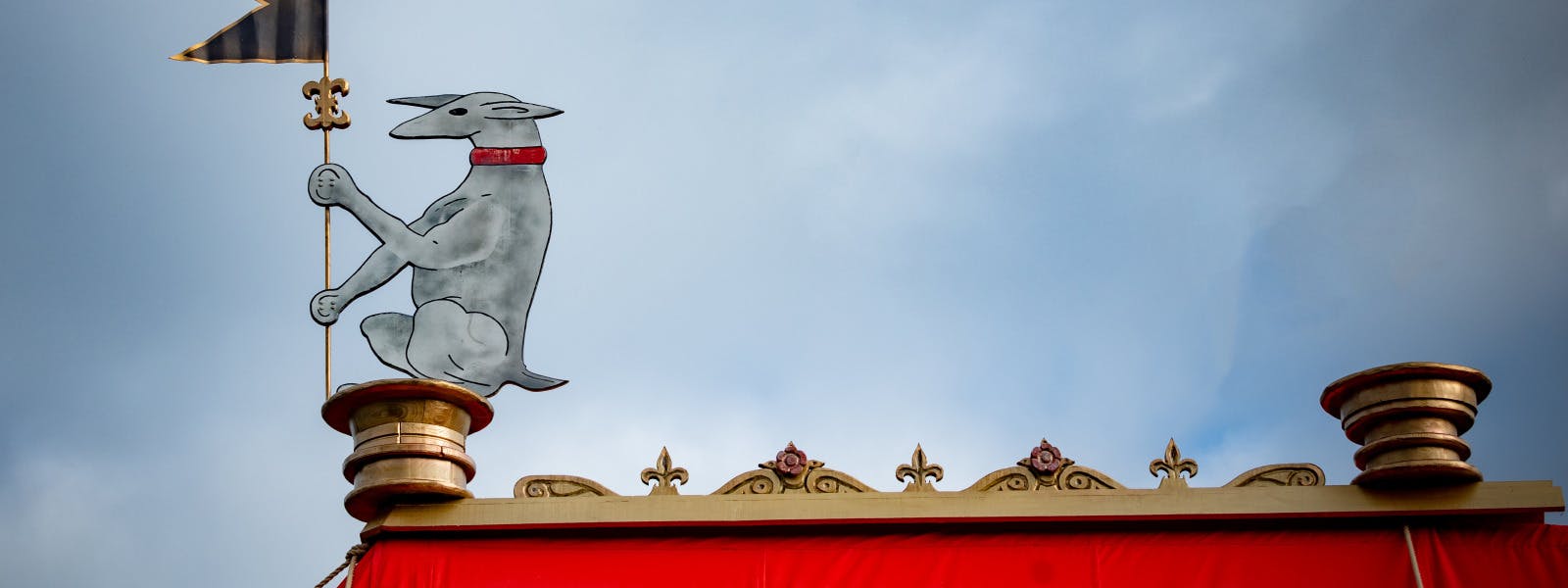
Royal Tents and Timber Lodgings (1509-1603)
About the Portable Palaces project
This project concluded in January 2019
The project was timed to underpin Historic Royal Palaces’ preparations for the 500th anniversary of the Field of Cloth of Gold in 2020, an event that arguably defined the importance of tents and temporary structures as a tool of European monarchy in the period and as an outlet for creativity in architecture and design. However, the project looked beyond that single event to review the role of the royal tent across the whole period from the accession of Henry VIII to the death of Elizabeth I.
Project highlights
The project drew upon a rich vein of evidence that includes paintings and drawings, account books, inventories, chronicles, furniture, and surviving fragments said to be from royal tents that has never before been collated and reviewed as a whole.
By doing so the project highlighted the important role played by tents in European diplomacy and demonstrated that the Office of Tents and Revels employed renowned craftsmen whose work on temporary structures playfully and experimentally pushed the boundaries of architectural and decorative design at a time widely acknowledged as a great period of development in English architectural history.
The experimental archaeology undertaken revealed new insights not only into the tents and temporary buildings themselves but also into the construction, appearance, and use of the great Tudor palaces including Hampton Court and the Tower of London.

Image: Recreating the Tudor Tent © Historic Royal Palaces
Research questions
The project asked the following key research questions:
- Making – How were the royal tents and timber lodgings constructed, transported, decorated and furnished and how did this change during the period?
- Meaning – How were tents and timber lodgings used to convey messages of royal authority?
- Influence – To what extent did the patronage of the Office of Tents and Revels act as a catalyst for the development of architectural and decorative style during the 16th century?

Image: Reconstruction of a Tudor tent drawn as part of the project @ Historic Royal Palaces
Research findings
The Portable Palaces project team explored the research questions with a combination of traditional archival, art historical, and object-based research and an innovative process of experimental archaeology or practice-based research methodologies.
This process culminated in the creation of a historically informed royal tent made in collaboration with specialist tentmakers LPM Bohemia Ltd. that was erected at Hampton Court Palace in 2018. By constructing a full-size tent, the project tested hypotheses about construction methods and about the scales and dimensions of royal tents.
Research process and results
The research process uncovered significant new information about the materiality of Tudor tents including about the supply and production of tent-making fabrics and the processes of commissioning and design. It also drew attention to the otherwise little-known type of building known in the 16th century as timber lodgings. These were innovative relocatable wooden buildings made for the king’s use on military campaign that combined extravagant architectural styles with sophisticated technology to create spaces that were both comfortable and protective.
Initial results of the project team’s research were presented at the project’s study day at Hampton Court Palace in October 2018. The day, themed around the idea of ephemerality at early modern courts, brought together a diverse group of speakers on subjects including the Field of Cloth of Gold, masques and theatricality, and the tents and temporary structures of Egypt and the Mughal and Qing worlds.

Image: A replica portable palace built after extensive research by the curatorial team on designs used by Henry VIII © Historic Royal Palaces
Outputs and events
Journal article
Gregory, A., ‘The Timber Lodgings of King Henry VIII: Ephemeral Architecture at war in the early sixteenth century’, The Antiquities Journal, 100 (2020), 204-23.
Blog post
Alden Gregory, ‘The Extravagant Funeral of Henry VIII’, HRP Curators’ Blog, February 2019.
Workshop
In October 2018, the project hosted a study day at Hampton Court Palace on ‘Temporary Magnificence: the Ephemerality of Early Modern Courts’.
Talks and presentations
Charles Farris, ‘Portable Palaces: Exploring Henry VIII’s Tents and Timber Frames Buildings’, Chalk Valley History Festival, Salisbury, June 2019.
Charles Farris, ‘Portable Palaces: Reconstructing Tudor Royal Tents’, Temporary Magnificence: The Ephemerality of Early Modern Courts, study day, Hampton Court Palace, October 2018.
Alden Gregory, ‘Portable Palaces: Ephemeral Architecture at War in the Early Sixteenth Century’, Temporary Magnificence: The Ephemerality of Early Modern Courts, study day, Hampton Court Palace, October 2018.
Alden Gregory, ‘Henry VIII’s tents and timber lodgings’, Untold Tudors, workshop, Hampton Court Palace, November 2018.
Research team
Principal Investigator: Dr Alden Gregory (HRP)
Postdoctoral Research Associate: Dr Charles Farris (HRP)
Advisory panel: Professor Thomas Betteridge (Brunel University London), Professor Maria Hayward (University of Southampton), Professor Maurice Howard (University of Sussex), and Professor Glenn Richardson (St Mary’s University).
Funding
This project was funded by the Arts and Humanities Research Council’s Leadership Fellows scheme.

